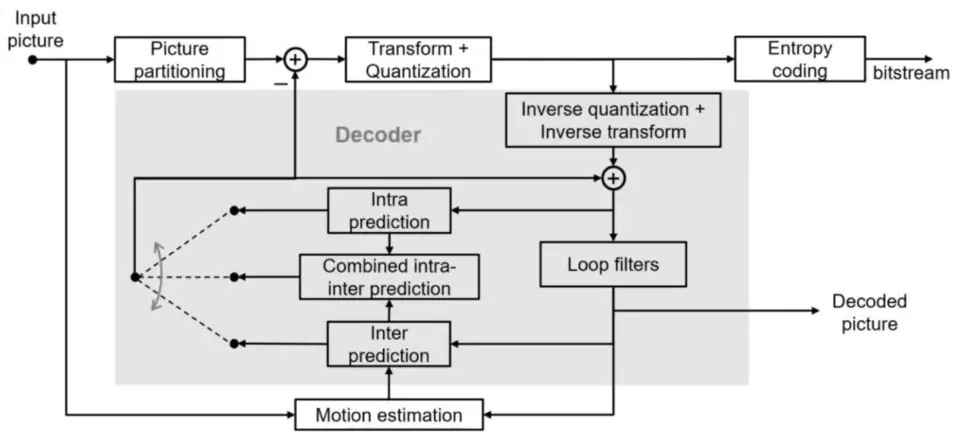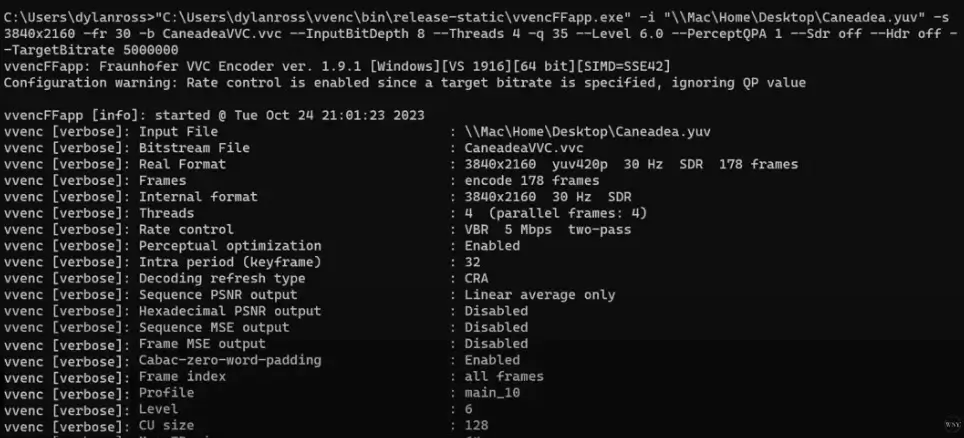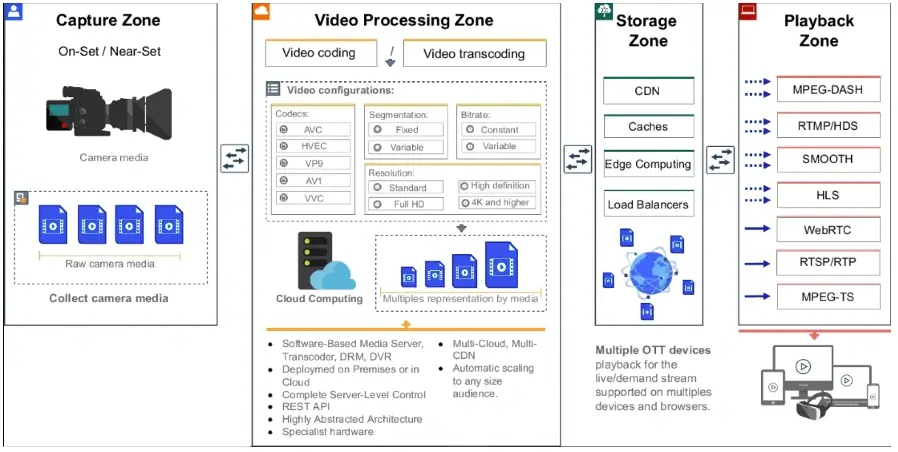In a world where video content is king, the need for high-quality streaming keeps growing, and the question remains: how do we provide breathtaking visuals without clogging our bandwidth? The solution is Versatile Video Coding (VVC), or H.266.
This equates to more seamless streaming, less buffering, and uncomplicated access to ultra-high-definition content, even in bandwidth-constrained scenarios. For consumers, VVC equals a better viewer experience, while content providers and service providers can realize new opportunities for delivering rich, immersive video that engages viewers. Prepare to learn how VVC is on the verge of revolutionizing the digital world and taking our video viewing to new heights.
Versatile Video Coding, or H.266, is a new video compression standard aimed at reducing video file size drastically without sacrificing high quality. Jointly created by the Joint Video Experts Team (JVET), VVC is poised to change the way we watch and experience video content on different platforms. VVC is also compatible with advanced features like High Dynamic Range (HDR) and enhanced error resilience, rendering it adaptable for different uses, ranging from entertainment to telemedicine.
VVC video compression methods are the techniques employed for compressing video data in an efficient manner with high quality. These methods are necessary for minimizing file sizes and enhancing streaming performance, particularly for high-definition content. VVC utilizes various advanced methods to provide this efficiency.

[Note: The above snapshot shows process, Credit: Source]
Several software tools and libraries are available to perform VVC codec sniffing—that is, identifying and analyzing video files or streams that use the VVC (H.266) codec. These tools can help determine the codec used in a video file and allow you to inspect the video stream for codec information.
When we perform VVC codec sniffing, we employ different software tools, including Elecard StreamEye, FFmpeg, VVenC, and VLC Media Player, which are specific to the type of video and the particular project demands. These software tools offer a mix of user-friendly interfaces and strong analysis functions so that we can effectively determine the codec used within video files—either VVC (H.266) or any other type. With these tools, we are able to derive key information in favor of our analysis and documentation of codec use in video applications.
When a video that is coded with Versatile Video Coding (VVC or H.266) is downloaded, it is stored as a file on a local storage device (hard drive, SSD). The process of extraction includes examination of the video file directly from storage where the codec may be determined by looking at the file’s metadata and internal format.
By using all kinds of sniffing tools, we are capable of extracting sensitive information from VVC files like video resolution, frame rate, bit rate, and encoding parameters. Through the analysis, it is also possible to identify support for features such as hardware acceleration or HDR (High Dynamic Range) that have the potential to improve playback performance and quality.

[Note: The above snapshot shows video codec extraction, Credit: Source]
We further collect information regarding the video level and profile, reference pictures, and encoding schemes used. Such a detailed extraction process is required to understand VVC-encoded video content’s capability and performance nature, which will help in the better management and optimization for streaming and playback purposes.
In streaming, video is sent in real-time over a network, typically in small pieces rather than being stored locally. Codec extraction for VVC (Versatile Video Coding) involves looking at the video stream as it is being sent to identify the codec being used.

[Note: The above snapshot shows streaming process, Credit: Source]
Codec sniffing is essential in the provision of Evidence of Use (EOU) by determining certain instances in which VVC is being implemented in real video streams. Substantiation of patent infringement allegations and enabling licensing negotiations through the demonstration of patented technology application is dependent on such information.
Video usability information in common media application format- US11962808B2
The disclosure outlines a mechanism for processing video data in a Versatile Video Coding (VVC) Common Media Application Format (CMAF) track. It involves determining information from a sequence parameter set (SPS), where a rule specifies that the video usability information progressive source flag field must be set to one. Based on the SPS, a conversion is performed between visual media data and a media data file.
Video coding with triangular shape prediction units- US12250391B2
The disclosure outlines a method for constructing a uni-directional motion vector merge list for triangular shape processing units (PUs) in the triangle prediction mode of video coding standards, such as Versatile Video Coding (VVC). A computing device performs this method by first creating a motion vector merge list for the coding unit (CU) that contains the triangular shape PUs. Subsequently, the device constructs the uni-directional motion vector merge list specifically for the triangular shape PUs based on the CU’s motion vector merge list.
Signaling of rectangular slices in the VVC video compression standard- US11616955B2
The disclosure outlines a method for encoding a video frame in a Versatile Video Coding (VVC) system. An encoder generates tile information for the frame, determines if a slice is a subset or superset of a tile, identifies the associated slice parameters, and signals them. Additionally, a decoder retrieves the tile information, assesses the slice’s relationship to the tile, identifies the slice parameters, and decodes the video frame using these parameters.
Method and systems for optimized content encoding- US12262024B2
The disclosure outlines a method for real-time bitrate adjustment by an encoder, such as a Versatile Video Coding (VVC) encoder, for content items like high-resolution videos. The encoder upscales or downscales portions of the content (e.g., frames, slices, GOPs) using a cost function that incorporates a versatile Lagrangian multiplier (λv). This multiplier accounts for quantization effects and adjustment parameters related to content resolution and playback quality of experience (QoE). By leveraging this approach, the encoder significantly reduces transmission bitrate without compromising visual quality, ensuring an optimal end-user QoE.
Our IPR experts specialize in thoroughly analyzing Versatile Video Coding codecs to ensure precise identification and analysis of codec-related features and functionalities. We provide detailed information about video streams, including resolution, bitrate, encoding parameters, and more.
Using advanced tools and techniques, we prepare a comprehensive claim chart or Evidence of Use (EOU) that demonstrates how the VVC codec is implemented in your specific case. Our expertise allows us to provide detailed documentation to support infringement claims, strengthening your position in legal proceedings by offering concrete evidence of how patented technologies are utilized in real-world video applications.
Get in touch with our subject matter experts today to ensure a thorough analysis and robust support for your VVC codec-related needs.